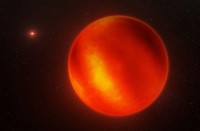
Reuters — The moon is much older than scientists thought. Researchers at the University of California Los Angeles (UCLA) have released a study which puts the moon’s creation at roughly 4.51 billion years ago, instead of the previously accepted 4.3 billion years. The finding is critical to understanding the formation of the solar system and gives new insight to the timing of life on Earth.
Past studies on the moon’s age were made by studying rocks called breccia, which are comprised of various fragments of moon rock bonded together. According to UCLA assistant researcher, Melanie Barboni, using breccia can lead to inaccurate dating because the pieces have been contaminated by the impacts which created them.
“Bits of rocks have a different history and therefore, you cannot really use the breccia to infer the age of the moon – it may be dating something else but not any more the age of the moon because this information has been lost by the impact.”
Barboni instead examined fragments of moon rocks called zircon, which were collected during the Apollo 14 mission. By measuring the radioactive decay of various elements in the zircon, Barboni and her team were able to get more precise measurements.
“We’re very careful to double check that those zircon didn’t experience post crystallization, impact damages, or anything. So they were pristine. And we found out that the moon is actually older. The moon didn’t form at 4.3 billion years old, but it formed at, minimum and that is a minimum age it could even be slightly older, it formed at minimum 4.51 billion years old.”
Scientists theorize the moon was created after a large body collided with primordial Earth. So these new findings reinforce another study done at UCLA which determined that life appeared on Earth as early as 4.1 billion years ago.
“So now if you believe the giant impact occurred at 4.3, it doesn’t leave you a long time between the impact and basically the earth being half destroyed and then the earth acquiring all the conditions you need for life,” said Barboni. “Now if you put your moon at 4.51, you have much more time to cool down your earth to start having your plate tectonics things again, generate the atmosphere, generate the water and then finally having all the conditions met for life.”
The new date means the moon formed roughly 60 million years after the birth of the solar system – a key factor for scientists analyzing how planets form.








